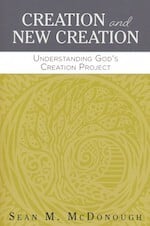In Life as in Writing: Transitions Bring Cohesion to the Whole
Blog / Produced by The High Calling
The last several years of my work life have brought one change after another: from teaching to administration to a combination of teaching and writing; from instructing oodles of wide-eyed freshmen to instructing wise-to-cynical upper-level and graduate students; from a teaching load that allowed relationships with students to build over several years to a teaching load that allows only fleeting connections formed over a fifteen-week semester; from writing letters to the editor to writing books, blogs, and articles for national magazines and academic journals.
Meanwhile, all around me, institutional changes swirl; shifting leadership, new buildings, departmental moves, internal restructuring, and evolving roles define my workplace. All my colleagues and I can do is blink in bewilderment and buckle up for the next bump ahead. Some of us manage the transitions well. Some of us don’t.
Change is the stuff of life. But transitioning well is the art of life.
It is in life as it is in writing: much of the art is in effective transitions. In its entry on transitions, The Guide to Grammar and Writing explains, “The most convincing ideas in the world, expressed in the most beautiful sentences, will move no one unless those ideas are properly connected.”
The lack of proper connections is, I’ve been noticing lately, the root of all kinds of trouble.
Weak or missing transitions account for the greatest problem in the writing of my advanced students. One paper in particular comes to mind. It deftly addressed heady philosophical ideas, each point brilliantly nuanced and skillfully applied to the material at hand. But these points were strung together like popcorn on a holiday garland—just one after another after another, no emphasis, no relationship established between them, no argument developed, no indication of whether the connection between ideas was sequential, illustrative, causal, conditional, continuous, comparative, or what. Just a list of bullet points without the bullets.
Sometimes life feels that way.
Maybe it’s our frenetic lifestyles. Maybe it’s the discontinuity of the social media our brains feed on. Maybe there’s so much out there and so much inside us that we just can’t see how it’s all connected. Which is why we need to be so intentional about transitions. They don’t come naturally.
Transitions—connections between what is now and what came before—turn a string of ideas or events into a coherent picture. Proper transitions not only bring the past into the present, but also rightly define the relationship between the two. When a shift occurs—whether in writing or in life—we need to consider how what has passed is connected with what is now present, whether it’s the previous paragraph in a paper, the previous position held with an employer, or the previous role at home. No matter the change, we bring all of what was with us. The focus may change, but the field of vision remains.
The key is putting what has already transpired into proper relationship with the new demands as part of a coherent whole. As John Gardner explains in his book, On Moral Fiction, “Life is all conjunctions,” just one thing after another. But art—the best and the most important art—he continues, “is all subordination.”
My recent, successive movements from one role to another in my work have proved Gardner’s truism as I have learned to make what is in the past subordinate to the present call. For example, when I moved away from a full teaching load to take an administrative role, I missed spending so much time with students. So I brought my love of students and teaching into my new role of approving or disapproving their requests, guiding their class choices, and signing their forms. Then, when I eventually stepped down from administration, I brought the experiences I gained in that leadership position into my renewed relationship as a now-more-seasoned colleague. At the same time, as my writing opportunities have grown and reduced my time in the classroom once again, I have found those experiences deeply enriching my ability to teach the craft to others.
Effective transitions present shifts as not just one thing after another, but one thing in relationship to another—both in the art of writing and of life.
Karen Swallow Prior is professor of English at Liberty University. She is the author of Booked: Literature in the Soul of Me and a contributing writer for Christianity Today.
:::
EDITOR’S NOTE: This week at The High Calling, we’re focusing on transitions in the workplace, home, and community. Are you experiencing change in your life? Join us each day this week for articles, interviews, and reflections on thriving in transition. Or, do you know someone who is going through a transition right now? Encourage them by sharing one of this week’s articles via email or social media.





